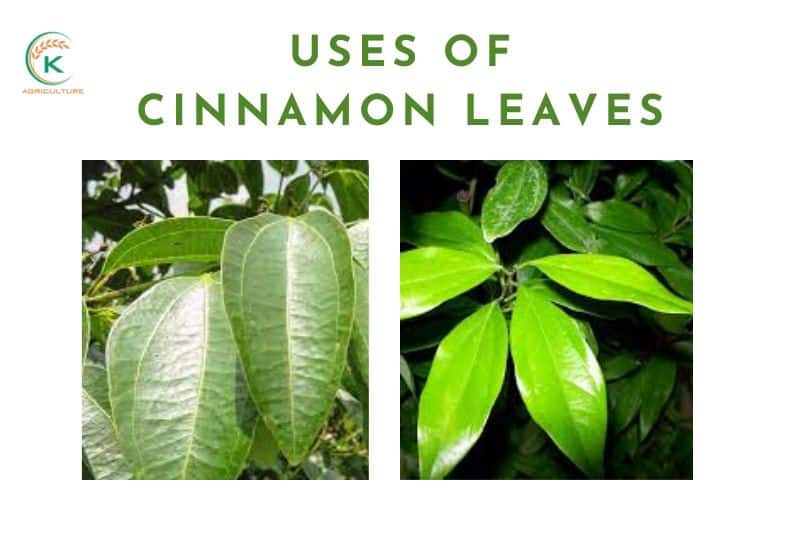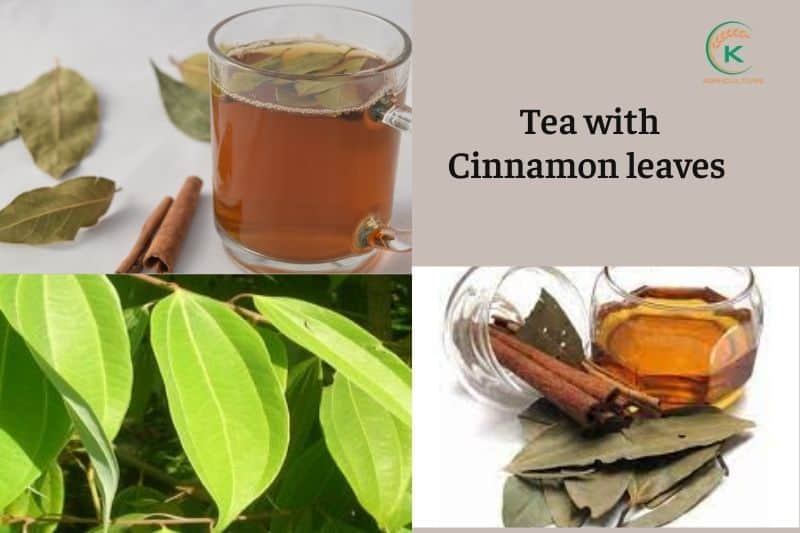For millennia, people have valued cinnamon for its taste and therapeutic benefits. While cinnamon sticks are frequently used in baking and cooking, cinnamon leaves are now gaining popularity because of their distinctive scent and potential health advantages. In this article, we’ll go over all you need to know about cinnamon leaves, including their varieties, advantages, and culinary applications. Let’s discover all the information about cinnamon leaves.
Contents
- 1 What is cinnamon leaves?
- 2 Types of cinnamon leaves
- 3 Characteristics of cinnamon leaves
- 4 Benefits of cinnamon leaves
- 5 Uses of cinnamon leaves
- 6 Cinnamon leaves recipes
- 7 FAQs
- 7.1 What are cinnamon leaves used for?
- 7.2 Are cinnamon leaves edible?
- 7.3 What is the difference between cinnamon bark and cinnamon leaves?
- 7.4 Are there any side effects of cinnamon leaves?
- 7.5 How should cinnamon leaves be stored?
- 7.6 Can cinnamon leaves replace bay leaves in recipes?
- 7.7 Which type of cinnamon leaf is best for cooking?
- 7.8 Can I make essential oil from cinnamon leaves at home?
What is cinnamon leaves?
The medium-sized, elongated, thin, oval to lanceolate, and tapering leaves of cinnamon have these characteristics. There is a clear, bright green vein running across each of the fresh cinnamon leaf’s leaves. There is a leathery, glossy green surface on fresh cinnamon leaves. Before they can grow and start to turn bright green, the unripe leaves of Cinnamon are crimson.

cinnamon leaves
Types of cinnamon leaves
Cinnamon is a well-known spice that is utilized in many different cuisines and traditional medical treatments all around the world. Few people are aware, though, that there are several varieties of cinnamon leaves on the market, each with a distinct flavor and perfume. We shall examine the numerous varieties of cinnamon leaves and their distinguishing qualities in this part.
Fresh cinnamon leaves
Cinnamon leaves are medium-sized, elongated, thin, oval to lanceolate, and tapering. Fresh cinnamon leaves have a bright green hue with a visible central vein that runs through each leaf. In fact, the surface of fresh cinnamon leaves is glossy and leathery green.

Types of cinnamon leaves
Dried cinnamon leaves
The leaves of cinnamon are elongated, slender, oval to lanceolate, and taper to a point. They are of average size. Each leaf also has three distinct, light-green center veins. While fresh leaves have a leathery, brilliant green surface that is tough to the touch, Dried cinnamon leaves have a matte finish and take on an olive hue similar to bay leaves.
Jamaican cinnamon leaves
The spice known as Jamaican cinnamon leaves is native to the Caribbean. They are also known as West Indians Bay leaves or pimenta racemose. The leaves are often used in Jamaican cuisine because of their distinctive flavor, warm, spicy scent, and healing powers. These leaves, which should not be mistaken for cinnamon bark, which is more frequently used, are a key component in many Caribbean dishes.
Ceylon cinnamon leaves
Sri Lanka is where the Ceylon cinnamon leaf originated. The fragrant, delicate perfume of these enormous, finely veined leaves is evocative of pure cinnamon. Although they are rarely encountered in Western cuisine, they are regularly utilized in dishes with Indian and island influences. They don’t offer an overwhelming taste like cinnamon bark does. The leaves are employed to flavor steamed food or long-simmered meals.
Cassia cinnamon leaves
Chinese cinnamon, also known as Chinese cassia, is a spice derived from the fragrant bark of the cassia tree, Cinnamomum cassia, which belongs to the Lauraceae family. The bark of cassia, Cinnamomum cassia, which is linked to genuine cinnamon, Cinnamomum verum, is comparable to that of cassia.
Characteristics of cinnamon leaves
Cinnamon leaves are a valuable, adaptable component with many distinctive qualities. Because of their unique flavor and perfume as well as their numerous medical benefits, cinnamon leaves have been utilized in traditional medicine and food since ancient times.
Full with eugenol
Cinnamon leaves are a typical ingredient with a lot of unique characteristics. One distinctive feature of cinnamon leaves is their increased eugenol content. A variety of phytonutrients are present in this material, which is a crucial component of the leaf extract and adds to its health benefits.
Distinct taste and scent
In addition, cinnamon leaves have a particular flavor and perfume that are often associated with cinnamon. It tastes somewhat warm and peppery. Cinnamon leaves, as opposed to cinnamon bark, offer a softer flavor and smell when used in food or beverages. They are widely used to make herbal beverages that aid in weight loss.
Medical Features
Furthermore, cinnamon leaves are well-recognized for their germicidal, antibacterial, and antifungal properties. These include qualities that are anti-diarrheal, anti-dote, antimicrobial, antispasmodic, anti-putrescent, aphrodisiac, astringent, carminative, digestive, emmenagogue, hemostatic, orexigenic, parasiticide, refrigerant, spasmolytic, stimulant, stomachic, and vermifuge. These characteristics make cinnamon leaves an essential part of both traditional and modern medicine.
Benefits of cinnamon leaves
Cinnamon is a spice that has been used for centuries for both its culinary and medicinal properties. The leaves of the cinnamon plant also have a variety of health benefits that have been recognized in traditional medicine. In this section, we will explore the benefits of cinnamon leaves, which include their use as a natural remedy for various ailments, their ability to aid in weight loss, and their positive effects on the skin. Additionally, we will discuss the various ways cinnamon leaves can be incorporated into your diet and daily routine to help improve your overall health and well-being.

Benefits of cinnamon leaves
Antioxidant qualities
One of the most remarkable cinnamon leaves benefits is its strong antioxidant capability. The natural compounds found in cinnamon leaves help protect the body’s cells from free radical damage, thereby reducing the risk of chronic diseases such as diabetes, heart disease, and cancer.
Inflammatory-reducing qualities
Cinnamon leaves offer anti-inflammatory qualities in addition to antioxidant ones. Numerous health problems, such as diabetes, heart disease, and arthritis, are associated with chronic inflammation. Cinnamon leaves contain anti-inflammatory substances that might aid in reducing inflammation, which may lessen the chance of acquiring various chronic conditions.
Blood sugar control
Blood sugar regulation is another benefit associated with cinnamon leaves. For people who have diabetes or who are at risk of getting it, this is very advantageous. Cinnamon leaves include chemicals that can increase insulin sensitivity, assisting the body in better controlling blood sugar levels.
Digestive Health
The beneficial impact of cinnamon leaves on digestive health is another advantage. GI problems including bloating, nausea, and indigestion can be relieved with cinnamon leaves. Additionally, they include antibacterial and antifungal qualities that might aid in preventing gastrointestinal illnesses.
Eugenol, a component of cinnamon leaf oil, is beneficial for gastrointestinal issues such as nausea, diarrhea, and upset stomach. Cinnamaldehyde, a compound found in cinnamon leaves, may lower the incidence of diabetes by improving insulin sensitivity.
Immune system improvement
Finally, it is thought that cinnamon leaves might strengthen the immune system. The high concentrations of anti-inflammatory and antioxidant chemicals in cinnamon leaves can help boost immunity and fend against infections and illnesses.
Uses of cinnamon leaves
Since ancient times, cinnamon leaves have been used for their numerous culinary and therapeutic benefits. The delicious leaves are not only a common ingredient in kitchens all around the world, but they also provide a number of health advantages. This section will examine the various uses of cinnamon leaves as well as their numerous therapeutic benefits. Cinnamon leaves have a wide range of applications, from making delectable drinks and baked items to healing skin disorders and respiratory infections.

Uses of cinnamon leaves
Uses for Cinnamon Leaves in Food
Porridge made in Jamaica, particularly cornmeal porridge, and baked dishes and pastries are frequently flavored with cinnamon leaves. Additionally, they are utilized in weight-loss-promoting herbal drinks. Without causing any unwanted side effects, cinnamon leaf tea can relieve the symptoms of the flu and colds as well as upset stomachs.
Two to three glasses of cinnamon tea each day are advised to prevent obesity. Green tea’s health advantages can be further enhanced by adding cinnamon leaves. Cinnamon leaves may enhance flavor and provide health advantages when added to meals
Uses for Cinnamon Leaves in Beauty
Numerous resinous compounds found in cinnamon leaf oil have been shown to have positive effects on health, including nourishing the skin, slowing the signs of aging, and restoring skin tone. Due to its antibacterial, anti-fungal, and antioxidant qualities, it helps with acne and other skin imperfections.
Cinnamon leaf oil moisturizes the skin by improving blood flow, oxygenating the skin’s surface, and clearing skin pores. When using cinnamon oil, it is suggested to stay away from delicate areas like the eyes, inner nose, ears, and other sensitive parts of the skin. To make a substitute for lip gloss or to reapply old gloss, mix cinnamon leaf oil with olive oil or petroleum jelly.
Uses for cinnamon leaves in medicine
It may be used as a massage oil or added to bathwater to cure ailments including arthritis, rheumatism, respiratory infections, and diarrhea. In order to make medicinal lotions and creams, cinnamon oil can also be blended with other herbs like cloves, frankincense, and lavender.
According to experts from K-Agriculture Factory, the diffuser’s vapors from the oil may produce a nice and comfortable atmosphere while also having a calming impact and reducing depressive symptoms. Because of its aphrodisiac qualities and ability to lessen emotions of exhaustion and hopelessness, cinnamon leaf oil is widely utilized in aromatherapy. Additionally, by energizing the glandular system, it helps minimize menstruation pain.
Traditional medicine has employed cinnamon oil to treat dental ailments, and it is still frequently found in chewing gum, mouthwash, and breath fresheners.
Cinnamon leaves recipes
Cinnamon leaves are a flexible ingredient that may be used in both sweet and savory cuisines. The delectable meals that may be cooked using cinnamon leaves are explored in this section. These recipes cover baked products like cookies and bread as well as alcoholic beverages like cinnamon tea and mixed drinks. Additionally, cinnamon leaves may be used to bring more depth of flavor to savory recipes like curries and stews. Cinnamon leaves are a well-liked ingredient among chefs and home cooks alike because of their warm, spicy flavor, which can bring a special touch to any cuisine. Let’s discover perfect cinnamon leaves recipes.
Cinnamon leaves tea
Making cinnamon tea from cinnamon leaves results in a tasty, relaxing beverage with several health advantages. Cinnamon leaves can be steeped in hot water with additional spices or flavorings to produce cinnamon tea. Chai tea, apple cinnamon tea, and honey cinnamon tea are a few common cinnamon tea recipes.

Tea with cinnamon leaves
The calming qualities of cinnamon tea, as well as its capacity to help control blood sugar levels, make it popular. There are numerous great recipes to discover and experiment with when using cinnamon leaves, whether you prefer cinnamon tea as a calming nighttime drink or a warm and welcoming morning beverage.
Rice dishes with cinnamon leaves
Rice cooked with cinnamon leaves is a tasty and fragrant recipe that is simple to prepare, a splash of salt, water, and a range of aromatic spices, including cardamom, cloves, bay leaf, and cinnamon stick, are all added to the rice as it is cooked. After being placed in an oven-safe baking dish, the mixture is covered with foil and roasted for 30 minutes. After being finished cooking, the rice is given five minutes to steam before being fluffed with a fork and served. Popular Middle Eastern and Indian dishes feature rice with cinnamon leaves because of their hearty, soothing flavors and health advantages.
Cookies with Cinnamon leaves
Cookies made with cinnamon leaves have a warm, aromatic scent and a distinctive, mouthwatering flavor. The ingredients in the recipe normally consist of cinnamon leaves, flour, sugar, butter, and eggs. The dough ingredients are formed into little balls and cooked in the oven.

Cookies with cinnamon leaves
Popular cinnamon leaf cookie variants include Snickerdoodle, oatmeal cinnamon, and cinnamon sugar cookies, which are frequently eaten as a dessert or snack and coupled with tea or coffee for a comforting treat. Due to their distinctive tastes and enticing perfume, cinnamon leaf cookies are a popular and well-liked dessert option.
Stew pork with cinnamon leaves
Rinse, pat dry, slice, and cut pork into large chunks. Before cutting the onions and garlic into slices and columns, they should both be peeled. To prepare the tomatoes, they must first be boiled in boiling water before being drained, skinned, quartered, the core removed, and finely diced.
Sear the pork in heated oil in a pan. After being added, the onions and garlic should be sautéed for a few minutes. Just enough liquid should be added to cover the meat after adding the red wine and letting it simmer for a time.
The stew should simmer for about 1.5 hours over low heat with the lid on, adding the tomatoes, juniper berries, and cinnamon leaves as needed.
FAQs
What are cinnamon leaves used for?
Cinnamon leaves are commonly used as a spice in cooking, herbal tea, and essential oils. They add a warm, slightly spicy aroma to dishes and are also used for their antioxidant and medicinal properties.
Are cinnamon leaves edible?
Yes, cinnamon leaves are edible when cooked or steeped. However, they are usually removed before serving, similar to bay leaves, because the texture is tough and fibrous.
What is the difference between cinnamon bark and cinnamon leaves?
Cinnamon bark is the inner layer of the cinnamon tree, known for its sweet, intense flavor. Cinnamon leaves, on the other hand, have a milder, clove-like aroma due to the presence of eugenol rather than cinnamaldehyde, the main compound in bark.
Are there any side effects of cinnamon leaves?
In normal culinary use, cinnamon leaves are safe. Overconsumption or use of strong cinnamon leaf oil can cause allergic reactions or irritation in sensitive individuals. Pregnant or breastfeeding women should consult a doctor before regular use.
How should cinnamon leaves be stored?
- Fresh Leaves: Store in refrigerator in plastic bags for up to one week, or freeze for longer storage.
- Dried Leaves: Keep in airtight containers away from light, heat, and moisture. Properly stored dried leaves can last 1-2 years.
- Essential Oil: Store in dark glass bottles in cool, dry places away from direct sunlight to maintain potency.
- Powder: Ground cinnamon leaf powder should be stored in sealed containers in cool, dry conditions and used within 6-12 months for best flavor.
Can cinnamon leaves replace bay leaves in recipes?
Yes, cinnamon leaves can be used as a substitute for bay leaves. They add a slightly warmer and more aromatic flavor, especially in curries, soups, and stews.
Which type of cinnamon leaf is best for cooking?
Ceylon cinnamon leaves are often preferred for culinary uses because of their milder, more delicate aroma. Cassia leaves have a stronger, spicier scent suitable for bold dishes.
Can I make essential oil from cinnamon leaves at home?
It’s possible but requires distillation equipment. The cinnamon leaf essential oil extracted this way is rich in eugenol and is often used in aromatherapy, massage blends, or as a natural disinfectant.
In conclusion, cinnamon leaves are a great addition to our everyday lives since they provide a wide range of advantages and applications. Cinnamon leaves have been demonstrated to be adaptable and successful in a variety of contexts, from their medical capabilities to their culinary usage. Its essential oil can be used for the skin, and hair, and for aromatherapy. Additionally, consuming cinnamon leaves in a variety of ways helps reduce blood sugar levels, enhance digestion, and relieve pain and inflammation. Given all these advantages and applications, it is understandable why cinnamon leaves have been used in traditional medicine for so long. Overall, cinnamon leaves are a necessity for anyone seeking a natural way to improve their health and well-being.





Please Post Your Comments & Reviews